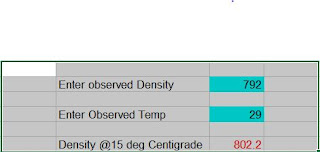British Airways flight BA 038 flight altitude and Cold fuel Management - part 3
British Airways flight BA 038 flight altitude and Cold fuel Management - part 3
This is in continuation of “Aviation Turbine Fuel and British Airways Flight 38 Accident – part 2”, a blog series for understanding Aviation turbine fuel’s role in modern civil flights specially behavior of water in fuel to mitigate it’s adverse effects during flight, including at high altitude where water will turn into ice.
The article leads to next parts on fuel temperature at various stages during flight journey, how temp measured, how fuel temp is controlled so the fuel does not freeze etc.
Boeing
777 flight BA-38's route took it over Mongolia, Siberia and Scandinavia, at an
altitude which varied between 34,800 and 40,000 ft (FL348–400,
between 10,600 and 12,200 m), and in atmosphere temperatures between −65 and
−74 °C.
 |
| Figure - Flight BA 038 route Beijing to London over Mongolia, Siberia, Scandinavia |
 |
| Figure- Fuel Temperature, TAT, SAT , Altitude Vs Flight time |
TAT = Air temperature measured by a temperature probe mounted on the surface
of the aircraft.
SAT = Static air
temperature is true air temperature, also called outside air temperature (OAT).
Meteorological
information on Temperature
The Met office provided an aftercast of the weather
situation using archived charts and data from for 17th January 2008.
Beijing
- The Beijing departure Automatic Terminal Information Service (ATIS) for 17
January 2008 reported, a temperature of -7˚C, a dew point of ‑16˚ C.
En
route - The aircraft had climbed out of Beijing to an initial cruise
altitude of FL348 before flying toward Siberia. Estimated temperatures at FL348
were around -65˚C, giving the aircraft an estimated TAT of -37˚C.
Shortly
after crossing the Ural Mountains, the aircraft climbed to FL380. At the time
the aircraft passed through the area between the Urals and Eastern Scandinavia,
there was a region of particularly cold upper winds, with temperatures en route
as low as -74˚C.
The Met office described the temperature conditions in
this area as “unusually low compared to the average but not exceptional.” This
was based on a statistical analysis of a data set of the mean January
temperatures recorded in this area between 1992 and 2007. The recorded SAT of
-73˚C on aircraft was toward the lower end of three standard deviations from
the mean.
Heathrow
The Heathrow weather was mild at the time of the
accident. The surface temperature was 10°C with a dew point of 8°C. There was a
warning of moderate icing in the vicinity of the Bovingdon beacon
(approximately 15 nm north of Heathrow) at FL090.
Cold fuel management
Boeing has published detail procedure of managing cold fuel in aircraft. Because of the extended flight duration and the prevalence of very cold air
masses on the polar routes, the potential exists for fuel temperatures to
approach the freezing point. However, current airplane systems and operating
procedures provide confidence that fuel will continue to flow unobstructed to
the engines in all plausible cold-weather conditions likely to be experienced
on polar routes.
Most
Jet engine fuel systems have means to heat the fuel to prevent it from
freezing using Fuel Oil Heat Exchangers (FOHE). Typical heat exchange methods followed are by employing hot air or
hot oil taken from the engine.
In next part we will cover the actual fuel temperature changes on accident B 777 BA-38 from Beijing to London and then how the water condensed from Jet A-1 froze to ice.
Author's Profile
List of all blog articles on Petroleum QC by RJ Patel.
Refrences:
- Report on the accident to Boeing 777-236ER, G-YMMM, at London Heathrow Airport on 17 January 2008
Chapter 14: Aircraft Fuel System - FAA
Aviation Turbine Fuel and British Airways Flight 38 Accident - Accident details - Part 2
Aviation Turbine Fuel and British Airways Flight 38 Accident - Part 1
Keywords - Jet A-1 Aviation fuels, FOHE, water in fuel, Freezing Point, Cold Fuel Management, London Heathrow, Beijing, Airport, TAT, SAT,

Comments